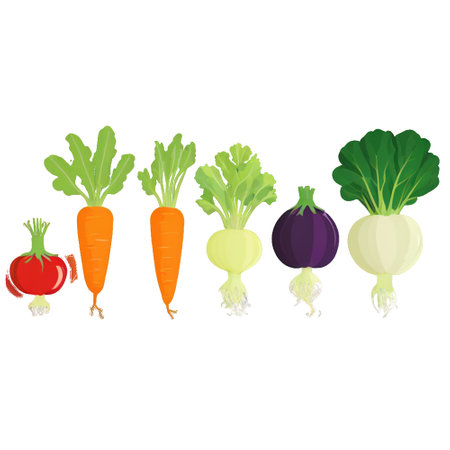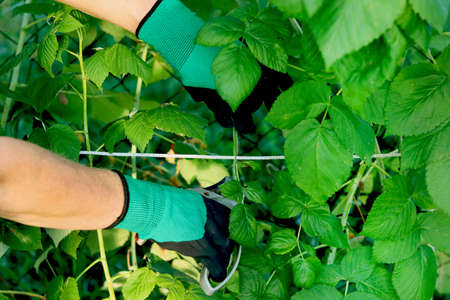1. Understanding the British Winter Climate
Gardening through the British winter presents a unique set of challenges and opportunities. The UK’s winter climate is generally characterised by short daylight hours, frequent rainfall, high humidity, and fluctuating temperatures that can drop below freezing, particularly in the north and rural areas. Frosts are common from late November to early March, with occasional snowfall more likely in Scotland and higher altitudes. These conditions demand careful planning for anyone wishing to cultivate vegetables during the colder months. It is essential to consider microclimates within your own garden, as sheltered spots near walls or hedges may offer increased protection from wind and frost. Additionally, waterlogged soil can be a significant issue due to persistent rainfall, making good drainage a priority for winter beds. Selecting hardy vegetable varieties that thrive in low light and cool temperatures will increase your chances of success. By understanding the nuances of the British winter and adapting your gardening techniques accordingly, you can ensure a productive plot throughout the season.
Choosing the Best Winter Vegetables for UK Gardens
Growing winter vegetables in British gardens is a rewarding way to ensure a fresh supply of produce even during the colder months. The key to success lies in selecting crops that can withstand the UK’s unpredictable weather, resist frost, and continue to grow or remain harvestable through winter. Below is a guide to help you choose hardy and productive varieties suitable for British conditions.
Understanding UK Winter Conditions
The British climate can be damp, cold, and prone to sudden temperature changes. When choosing winter vegetables, look for those that are resilient to frost, tolerate low light levels, and thrive in heavy or wet soils typical of many UK regions.
Recommended Winter Vegetable Varieties
| Vegetable | Recommended Varieties | Key Benefits |
|---|---|---|
| Kale | ‘Nero di Toscana’, ‘Red Russian’ | Extremely hardy; improves flavour after frost |
| Brussels Sprouts | ‘Trafalgar’, ‘Bosworth’ | Withstands frost; long harvest period |
| Cabbage (Winter types) | ‘January King’, ‘Savoy’ | Tolerates cold; stores well outdoors |
| Leeks | ‘Musselburgh’, ‘Bandit’ | Robust and reliable; slow to bolt in mild winters |
| Parsnips | ‘Gladiator’, ‘Javelin’ | Sweeter after frost; left in ground until needed |
| Swede (Rutabaga) | ‘Best of All’, ‘Invitation’ | Hardy root veg; stores well in soil or shed |
| Spinach (Winter types) | ‘Giant Winter’, ‘Perpetual Spinach’ | Tolerant of low temperatures; continuous picking |
| Turnips (Winter types) | ‘Purple Top Milan’, ‘Snowball’ | Matures quickly; withstands early frosts |
| Broad Beans (Autumn sown) | ‘Aquadulce Claudia’ | Sown in autumn for very early spring crops |
| Winter Salad Leaves | ‘Land Cress’, ‘Claytonia’, ‘Corn Salad’ (Lamb’s Lettuce) | Sow under cloches or in cold frames for fresh greens all winter |
Selecting for Productivity and Taste
Selecting varieties bred specifically for winter cropping is crucial. Many modern cultivars offer improved resilience as well as better flavour and texture when grown in colder conditions. Where possible, consult local garden centres or allotment associations for advice on what performs best in your area.
Cultural Tips for Success:
- Sow at the right time: Most winter vegetables should be sown between late spring and midsummer to establish strong plants before the cold sets in.
- Pest protection: Pigeons and slugs remain active year-round. Consider netting brassicas and using organic slug controls.
- Diversify your crops: Plant a range of varieties to spread risk and enjoy different flavours throughout the season.
The right selection of winter vegetables ensures your British garden remains productive from late autumn through to early spring, providing nutritious home-grown food whatever the weather.

3. Preparing Your Garden for Winter Planting
Effective preparation is fundamental to a successful winter vegetable garden in the UK. The unpredictable British weather, from persistent rain to early frosts, demands careful planning and adaptation. Below, we offer structured advice on soil preparation, plot planning, and implementing protective measures suitable for the UK climate.
Soil Preparation: Building a Resilient Foundation
Start by clearing away remnants of summer crops and removing any weeds, which can harbour pests or diseases over winter. Test your soil’s pH—most winter vegetables thrive in slightly acidic to neutral soils (pH 6.0–7.0). Enrich your beds with well-rotted compost or manure to improve structure and fertility, ensuring your crops have access to essential nutrients during colder months. For heavy clay soils common in many parts of Britain, consider incorporating horticultural grit or sand to enhance drainage and prevent waterlogging.
Plot Planning: Maximising Space and Sunlight
Careful plot planning is crucial as daylight hours shorten. Position your winter beds in the sunniest part of your garden to maximise exposure, ideally orienting rows north-south for even light distribution. Group crops by their hardiness; more robust varieties like kale and Brussels sprouts can provide shelter for less hardy greens such as lettuce or spinach. Plan pathways for easy access during wet conditions, using gravel or woodchip to reduce mud and compaction.
Protective Structures: Shielding Against British Weather
The UK’s variable winter weather calls for strategic protection. Erect cloches or cold frames over delicate seedlings to safeguard them from frost and excessive moisture. For larger plots, consider constructing simple polytunnels or installing horticultural fleece directly over rows—these barriers moderate temperature fluctuations and shield against harsh winds. Raised beds are highly recommended as they promote better drainage and warm up faster after frosts, providing an extended growing window for your vegetables.
Key Takeaway
By investing time in thorough soil conditioning, meticulous bed arrangement, and effective weatherproofing methods tailored to the British climate, you set the stage for a productive and resilient winter vegetable garden.
4. Sowing, Planting, and Timing
Successfully growing winter vegetables in British gardens hinges on precise timing and methodical sowing or planting. The UK’s unpredictable autumn weather and short daylight hours mean that careful planning is essential to ensure your crops thrive throughout the colder months. Below, we outline practical tips and a seasonal timetable to guide your efforts.
Understanding British Winter Growing Conditions
Winter in Britain is characterised by cool temperatures, frequent rainfall, occasional frost, and reduced sunlight. These conditions impact germination rates, plant growth, and overall yields. Selecting hardy varieties and employing protective measures like cloches or fleece can make a significant difference.
Direct Sowing vs. Transplanting
Direct Sowing: Hardy vegetables such as broad beans and winter spinach can be sown directly into prepared beds from late summer to early autumn. Ensure the soil is well-drained and enriched with compost.
Transplanting: For crops like cabbage, kale, and leeks, it is often more effective to start seeds indoors or under cover in mid-summer before transplanting seedlings outdoors once they are robust enough to withstand cooler temperatures.
Sowing and Planting Schedule for Key Winter Vegetables
| Vegetable | Sowing Time | Planting/Transplanting Time | Notes |
|---|---|---|---|
| Kale | June–July (indoors) | July–August (outdoors) | Use fleece if early frost threatens young plants. |
| Cabbage (Winter Varieties) | May–June (indoors/outdoors) | July–August (outdoors) | Firm soil well around roots for stability. |
| Leeks | February–April (indoors/outdoors) | June–July (outdoors) | Mature slowly; mulch well for warmth. |
| Broad Beans | October–November (direct sowing) | N/A | Select hardy varieties like ‘Aquadulce Claudia’. |
| Spinach (Winter Hardy) | August–September (direct sowing) | N/A | Sow successionally for continuous harvest. |
| Garlic | October–November (cloves direct in ground) | N/A | Purple Stripe types perform well in UK winters. |
Practical Tips for Optimal Growth
- Sow Earlier Than You Think: In most regions of Britain, aim to have winter crops established by late summer or very early autumn to maximise root development before cold sets in.
- Avoid Waterlogged Soils: Raised beds or ridges help prevent root rot during wet spells common in British winters.
- Cloches & Fleece: Use these to protect seedlings from early frosts and heavy rain, especially in northern areas or exposed sites.
- Sow Successionally: For leafy greens like spinach or chard, sow small batches every fortnight from August onwards for a steady supply through winter.
Troubleshooting Common Issues
If germination is slow due to cold snaps, consider starting seeds indoors on a bright windowsill or using a cold frame. Watch for slugs and snails, which remain active during mild winters—use wildlife-friendly deterrents where possible. Lastly, always label rows clearly as winter crops can take longer to emerge than those sown in spring or summer.
5. Caring for Winter Crops
Essential Maintenance for Healthy Growth
Successful winter vegetable gardening in the UK requires consistent and thoughtful maintenance. Begin by regularly removing fallen leaves, decaying plant material, and weeds from your beds, as these can harbour pests and diseases during damp British winters. Mulching is particularly beneficial; apply a thick layer of organic matter such as well-rotted compost or leaf mould to insulate the soil, suppress weeds, and retain moisture. Additionally, check supports and stakes for taller crops like Brussels sprouts or kale, ensuring they remain stable against strong winter winds.
Watering Strategies During Colder Months
Although rainfall is common in the UK winter, it’s crucial not to neglect watering altogether. Monitor the soil moisture—especially during dry spells or when crops are under cover in greenhouses or cloches. Water sparingly but deeply, focusing on the base of plants rather than foliage to reduce the risk of fungal diseases. Avoid overwatering as waterlogged roots are susceptible to rot; well-drained soil is key. It’s best to water early in the day so any excess moisture can evaporate before nightfall, reducing potential frost damage.
Pest Protection Techniques
Winter crops in British gardens can be threatened by slugs, snails, pigeons, and even overwintering aphids. Use physical barriers such as netting or horticultural fleece to protect vulnerable leafy greens from birds. Slug traps—using beer or specially designed bait stations—can help manage mollusc populations without resorting to harsh chemicals. Regularly inspect the undersides of leaves for signs of pests and remove them by hand where possible. Encouraging natural predators like ground beetles and birds by maintaining biodiversity in your garden will provide sustainable pest control throughout the season.
Frost Protection Measures
Sudden frosts are a frequent challenge for UK gardeners. Cloches, cold frames, or floating row covers offer excellent protection for tender crops during cold snaps. For root vegetables left in situ, a thick mulch will insulate them against freezing temperatures. Always monitor weather forecasts and be prepared to cover crops at short notice.
Summary
Consistent care—through routine maintenance, tailored watering, effective pest management, and frost protection—ensures that your winter vegetable crops thrive despite the unpredictable British climate.
6. Harvesting and Storing Winter Vegetables
Knowing when and how to harvest your winter vegetables is crucial for maximising both flavour and nutritional value, especially in the variable British climate. This section provides guidance on recognising harvest-ready crops and outlines best practices for storing them effectively in British homes.
Identifying When Crops Are Ready to Harvest
The key to a successful winter vegetable harvest lies in understanding the maturity indicators of each crop. For root vegetables such as carrots, parsnips, and swedes, check for a firm feel and vibrant colour peeking above the soil surface. Brussels sprouts should be harvested from the bottom of the stalk upwards when the sprouts are firm and about 2-4cm in diameter. Leafy greens like kale and winter spinach can be picked as needed; harvest outer leaves first, allowing the plant to continue producing new growth. Leeks are ready when they reach a usable thickness – usually around 2-3cm in diameter.
Harvesting Techniques for Winter Conditions
During British winters, soil may become frozen or waterlogged, so plan harvesting during milder spells or after a frost has lifted. Use a garden fork or trowel to gently lift root vegetables, taking care not to bruise or damage them. For brassicas, use a sharp knife to cut stems cleanly. Avoid harvesting wet foliage where possible, as this can encourage rot during storage.
Best Practices for Storing Winter Vegetables at Home
Short-term Storage
Many winter vegetables keep well in cool, dark places typical of British larders or unheated utility rooms. Root crops can be stored in boxes of damp sand or peat to prevent shrivelling, while leafy greens are best kept in the fridge wrapped loosely in paper towels to maintain humidity.
Long-term Storage Solutions
If you have a cellar or garage that remains frost-free, these make ideal spots for storing bulkier harvests like cabbages, swedes, and potatoes. Ensure good ventilation and check regularly for any signs of mould or spoilage. Alternatively, blanching and freezing is effective for kale, spinach, and leeks if space allows.
Tips for Reducing Waste
Inspect stored vegetables weekly, removing any that show signs of deterioration to prevent spread. Utilise surplus produce by making soups, stews, or pickles – all traditional methods embraced by British households to extend the winter harvest’s usefulness.
By following these guidelines on harvesting and storage tailored to British conditions, you will enjoy fresh, home-grown produce throughout the coldest months and reduce unnecessary food waste.
7. Troubleshooting Common Winter Gardening Challenges
Even with careful planning and diligent maintenance, British gardeners often encounter a range of challenges when growing winter vegetables. Understanding these common issues and knowing how to address them is essential for ensuring a healthy, productive garden throughout the colder months.
Pest Problems in Winter
Contrary to popular belief, pests do not disappear entirely in winter. Slugs, snails, and overwintering aphids can still threaten your crops, especially under cloches or fleece where temperatures are slightly warmer. To minimise damage:
Expert Solutions
- Regularly inspect plants and remove pests by hand where possible.
- Use copper tape or organic slug pellets around vulnerable crops.
- Encourage natural predators such as birds by providing feeders nearby.
Fungal Diseases and Rot
The damp British winter can promote fungal diseases like downy mildew and root rot, particularly in heavy clay soils or poorly ventilated spaces.
Expert Solutions
- Improve drainage by incorporating organic matter and using raised beds where feasible.
- Avoid overcrowding plants to ensure good air circulation.
- Remove any diseased foliage promptly to prevent spread.
Frost Damage
Sudden cold snaps and hard frosts can damage even hardy winter vegetables, causing leaves to wilt or roots to become mushy.
Expert Solutions
- Protect sensitive crops with horticultural fleece or cloches during severe weather forecasts.
- Mulch heavily around the base of plants to insulate roots from freezing temperatures.
Poor Growth Due to Limited Light
The short days and low light levels typical of UK winters can result in slow growth or leggy seedlings.
Expert Solutions
- Select varieties bred for winter resilience and lower light conditions.
- Sow seeds early enough in autumn to allow for sufficient establishment before the darkest months set in.
Nutrient Deficiencies
Winter soils can be depleted of nutrients after summer cropping, affecting plant health and vigour.
Expert Solutions
- Add well-rotted manure or compost prior to planting winter crops.
- Consider supplementing with a balanced, slow-release fertiliser during periods of active growth.
Staying Vigilant: Regular Inspections Are Key
The most successful British winter gardeners maintain a routine of regular inspections, swiftly addressing any issues as they arise. By employing these expert strategies tailored to the unique challenges of the UK climate, you can enjoy robust harvests of nutritious winter vegetables all season long.


